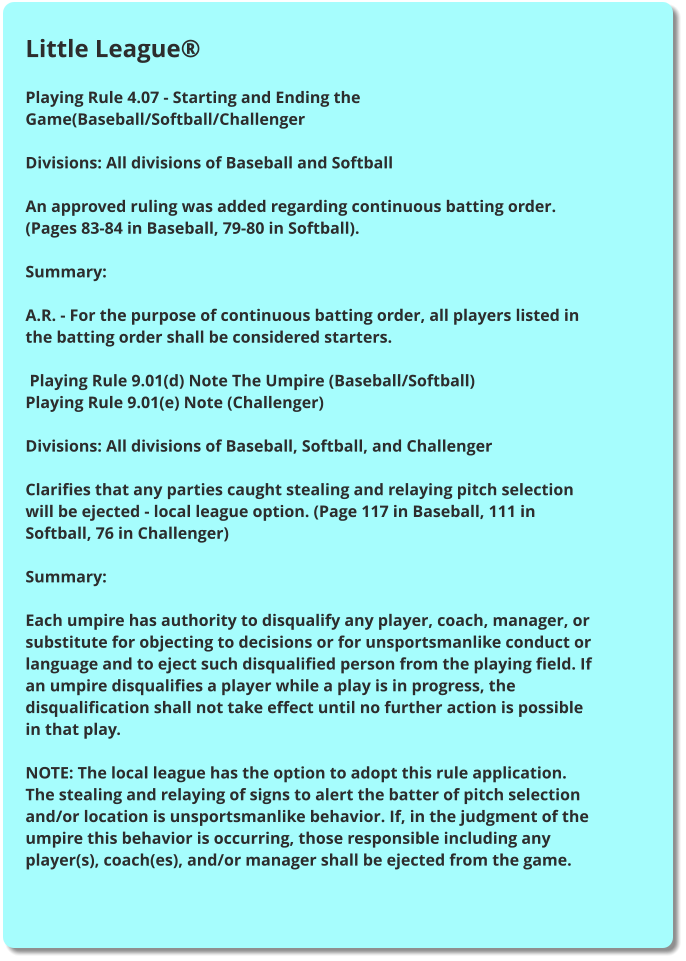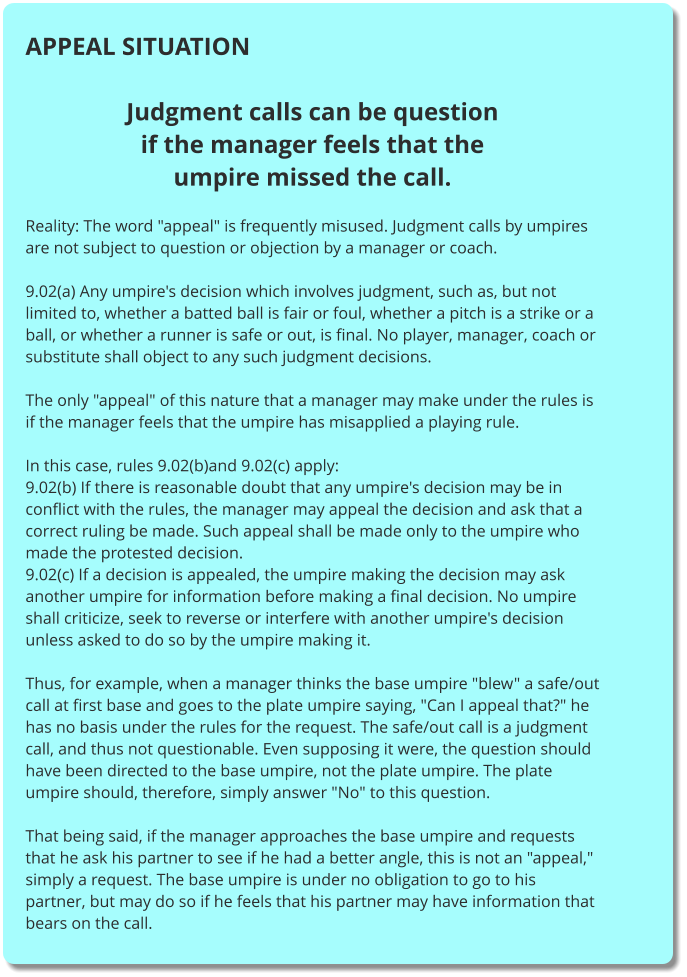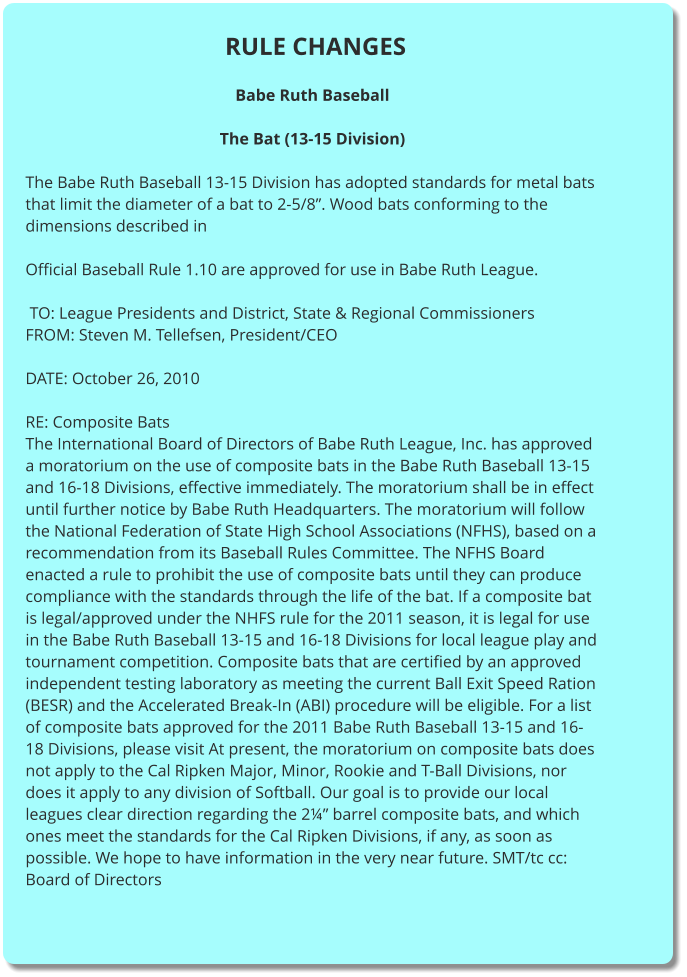© 2019-2021

THE BULLPEN
BULLPEN
“Tri-County Umpire Group”
















Time Plays
A time play (not "timing" play) is when a third out (but not a
force out) is made on the bases on the same play in which another
runner crosses home plate. If the runner touches home plate
before the third out is made on the bases, the run scores. If the
third out is made before the runner touches home, then the run
does not score.
Example: You have a runner on first (R1) with two outs. The batter-
runner (BR) hits a beautiful line drive in the gap in right-center
that goes all the way to the fence. The BR is thinking double. At
the same time, R1 is approaching third and the base coach is
sending him home. But the center fielder gets a carom off the
fence and makes an awesome throw to second base just as BR
slides in. Base umpire calls him out at second. At just this moment,
R1 is crossing the plate.
Well, that plate umpire had better be paying attention because
he's got a time play on his hands. He must see the out at second
(not the base umpire's signal of an out, but the actual event), and
he has to also see the touch of home plate. Then he must make a
call. We discuss the mechanic for making the time play call a little
farther down.
This is simple. The hard part is being alert to a time play
developing, and for the plate umpire to position himself so that he
can see both the out on the bases and the runner crossing the
plate.
Preparing for the possibility of a time play is similar to recognizing
that you're in an infield fly situation. As with the infield fly, where
the umpires exchange signals to prepare mentally for the
possibility, the same is true with a timing play. With two outs and
one or more runners in scoring position, the plate umpire should
signal his partner(s) two fingers tapping an imaginary wristwatch on
the left wrist, to alert everyone to the possibility of a time play.
The only flaw in the time play signal is that you can find yourself
with a time play with just one out (or none, for that matter). Both
are uncommon, but they can happen. So, again, the lesson here is
being alert.
Mechanic for calling a time play
When a time play occurs, and particularly if the play at the plate
and the play on the bases are very close, it is very important that
the plate umpire verbalize the outcome of the play (either the
run scores or it does not). The plate umpire must indicate to the
scorekeeper (or whomever is keeping the book):
If the run counts, point to home plate and announce (loudly)
"The run scores." Turn toward the scorekeeper and repeat,
"Score the run."
If on the other hand the run does not count, cross your
arms (similar to a safe sign) across home plate and
announce, "No score." Turn toward the scorekeeper and
repeat, "Do NOT score the run."
Failing to announce the outcome of a time play can lead to big
problems, particularly if one bench assumes one outcome while the
other team assumes the opposite. Two innings later, when everyone
discovers that their game scores are not in sync, you're going to
have the argument of your life.


Can you score on a third out?
No run may score on an inning-ending play in which the third out is a force out or on the
batter before he reaches first base. Put in other words, force outs count before runs are
scored. It is common that a runner reaches home plate a moment before the third out is made
by force out.
Does the run count if the runner is tagged?
If the tag is made after the runner from third scores, the run counts. If the tag on the
runner from second is made after the batter/runner reaches first base, the run counts. The
last scenario is the reason coaches instruct base runners not to run into a tag, so that the
runner from third has an opportunity to score.
What is a forced runner?
In baseball, a force is a situation when a baserunner is compelled (or forced) to vacate his
time-of-pitch base—and thus try to advance to the next base—because the batter became a
runner. A runner at first base is always forced to attempt to advance to second base when the
batter becomes a runner.















































